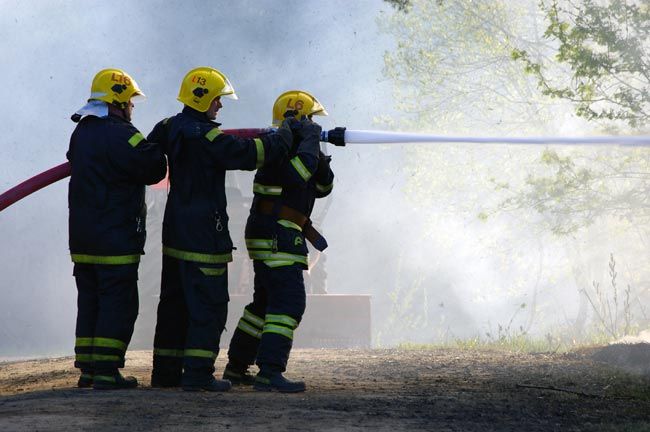How Overweight Are Firefighters and Paramedics?

Fire fighters are still our heroes, but a new study raises concerns about their health and mobility.
Researchers found that more than 75 percent of emergency responder candidates for fire and ambulance services in Massachusetts are either overweight or obese.
The findings, in the March 19 issue of the journal Obesity, have significant consequences for public health and safety.
Emergency responders (firefighters, ambulance personnel and police) are expected to be physically fit to perform strenuous duties without compromising the safety of themselves, colleagues or the community.
Traditionally, these professions recruited persons of above-average fitness from a pool of healthy young adults. However, given the current obesity epidemic, the candidate pool is currently drawn from an increasingly heavy American youth.
The researchers from Boston University School of Medicine, Boston Medical Center, Harvard University and the Cambridge Health Alliance reviewed the pre-placement medical examinations of firefighter and ambulance recruits from two Massachusetts clinics between October 2004 and June 2007.
Candidates older than 35 and those who had failed their services' minimum criteria were excluded from the study in order to focus only on young recruits and those most likely to go on to gain employment as emergency responders. Among the 370 recruits, only about 22 percent were of normal weight; 43.8 percent were overweight, and 33 percent were obese. According to the study's results, today's young recruits are significantly heavier than older veteran firefighters from the 1980s and 1990s.
Sign up for the Live Science daily newsletter now
Get the world’s most fascinating discoveries delivered straight to your inbox.
The researchers showed that excess weight as measured by body mass index (BMI) was associated with higher blood pressures, worse metabolic profiles and lower exercise tolerance on treadmill stress tests. All normal weight recruits achieved a National Fire Protection Agency's recommended minimum exercise threshold of 12 metabolic equivalents, while 7 percent of overweight and 42 percent of obese recruits failed to reach this criteria.
"These findings are strong evidence against the common misconception in the emergency responder community that many of their members have BMIs in the overweight and obese ranges simply on the basis of increased muscle mass," said Dr. Stefanos Kales, assistant professor at the Harvard Medical School and director, Occupational & Environmental Medicine Residency at the Harvard School of Public Health.
"Even in these young recruits we documented a very strong association between excess BMI and an increased cardiovascular risk profile," said Kales, who was the study's senior author.
The findings have important implications, especially when looking forward at the effects of aging and career span, said the study's lead author Antonios Tsismenakis, a second-year medical student at BUSM.
"First, cardiovascular disease and musculoskeletal injury are important causes of morbidity and mortality in emergency responders, and excess body fat is associated with higher risk for both," Tsismenakis said. "Second, because of the nature of emergency response work, any health condition suddenly incapacitating an emergency responder also potentially compromises the safety of his or her coworkers and the community."
Emergency responders perform psychologically and physically stressful work and are therefore at high risk for cardiovascular events, Kales said.
"Sudden incapacitation during duty puts these emergency responders, as well as their colleagues and the public, in danger," he said. "In addition to the dangers posed to public safety, these findings have important economic implications, as state and federal legislation exists for the awarding of benefits to emergency responders who die or are disabled by cardiovascular events, malignancies and work-related orthopedic problems; and the risk of all of these are increased by obesity."
The study was supported in part by a grant from the U.S. Department of Homeland Security.
- Obesity: News and Information
- Video – Putting Out Forest Fires
- Natural Disasters: Top 10 U.S. Threats












